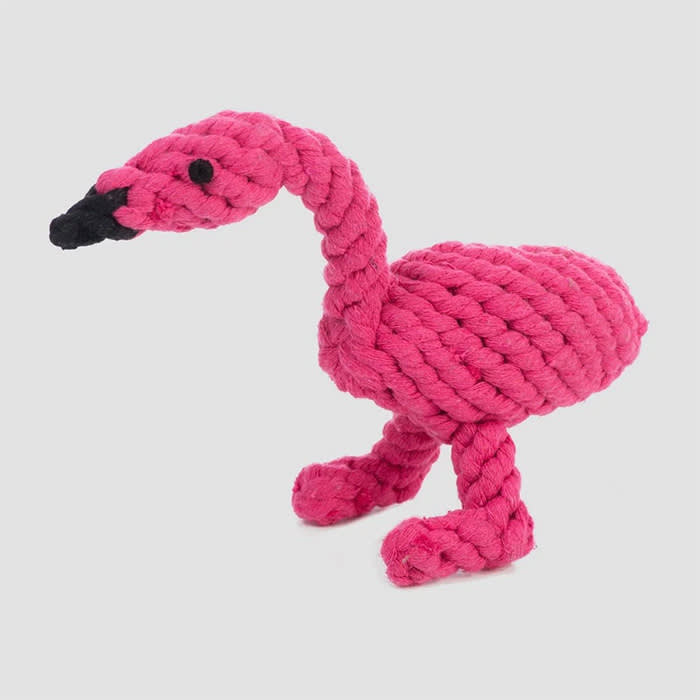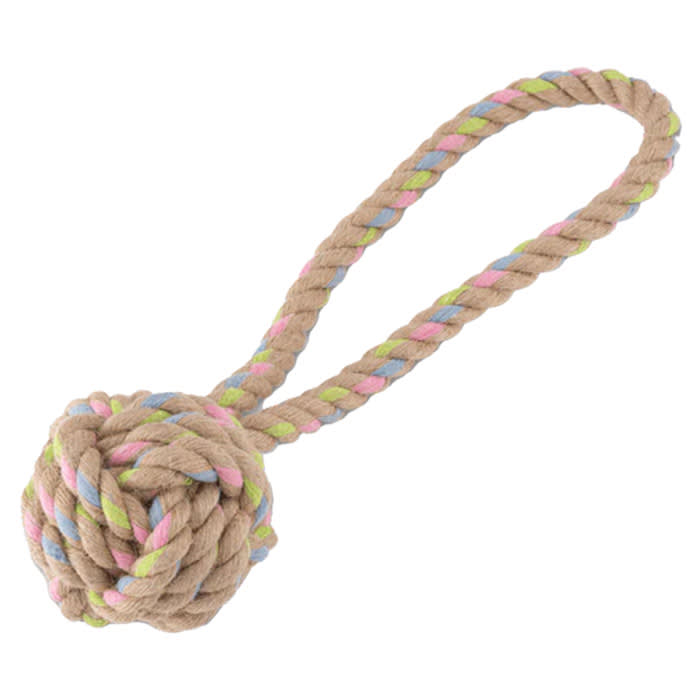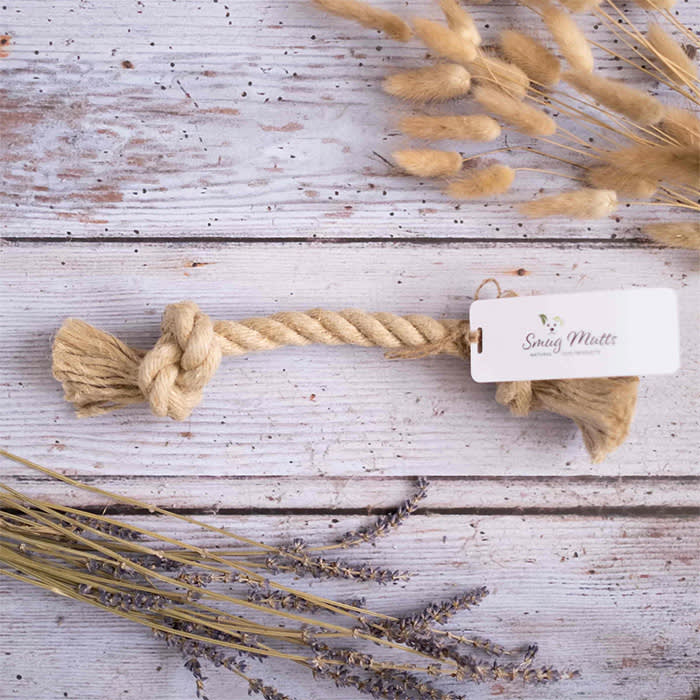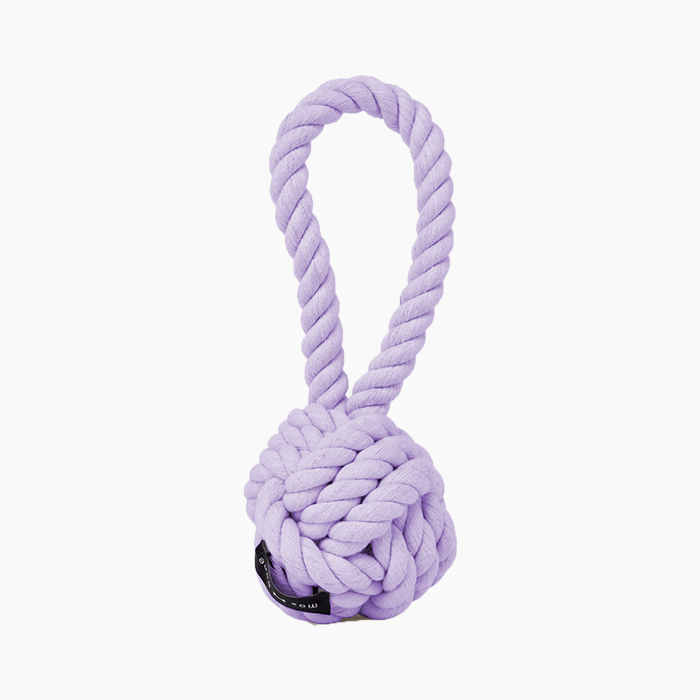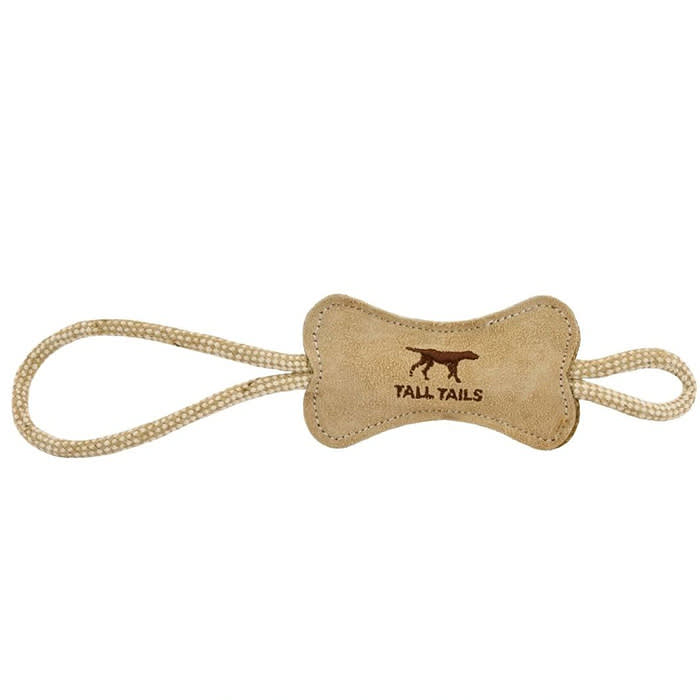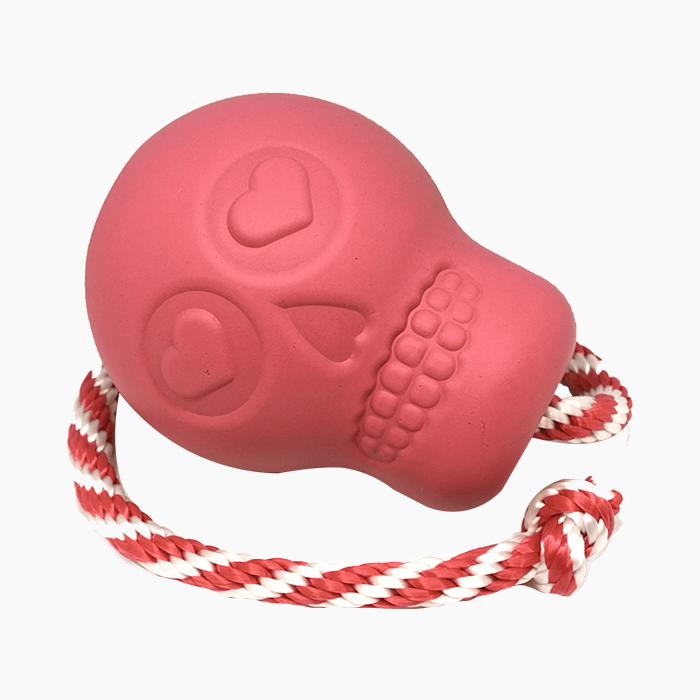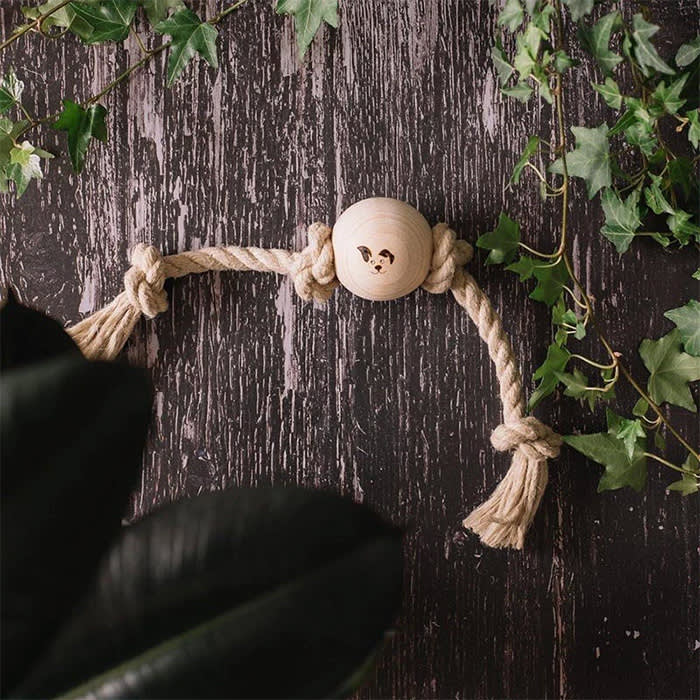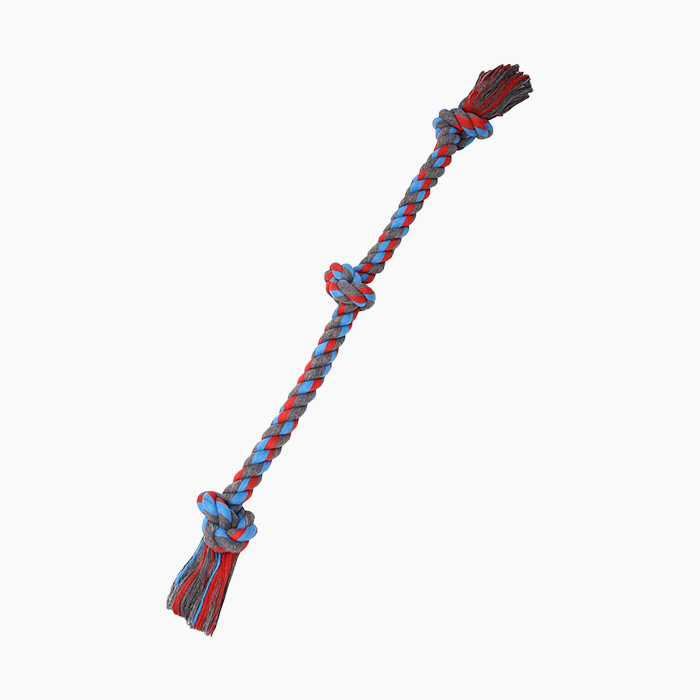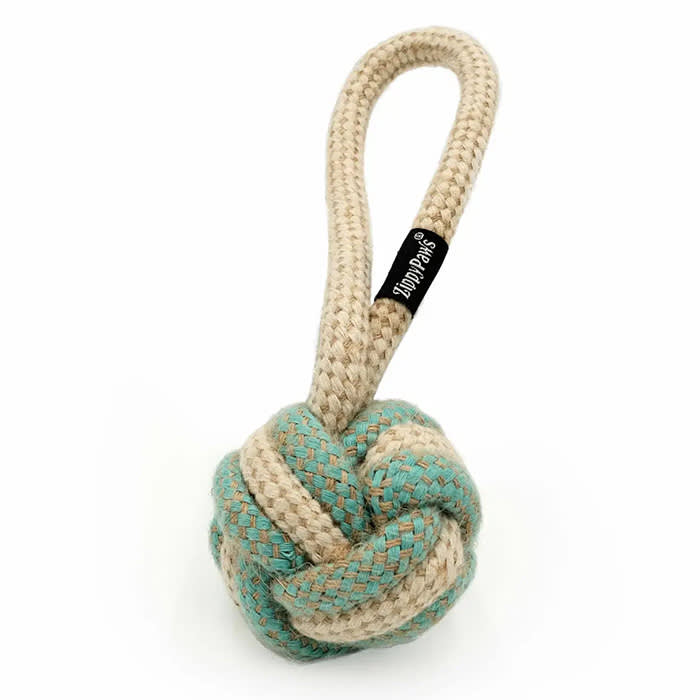10 Rope Toys Fit For Playful Pups
Two experts on the pros and cons of the classic canine toy
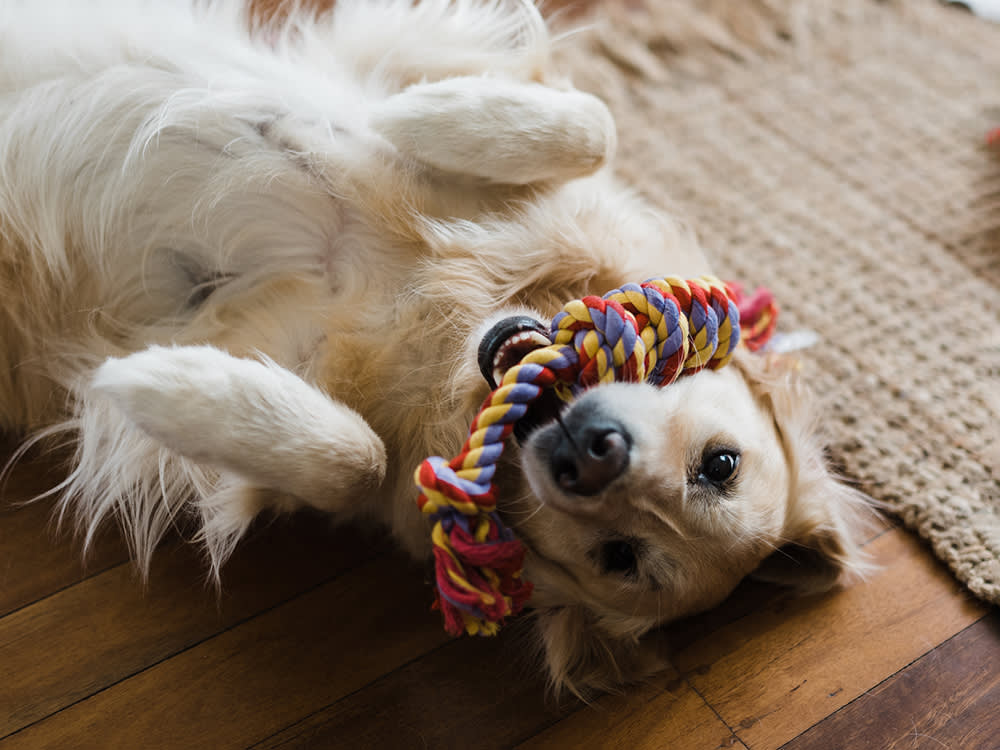
share article
There are few toys more synonymous with dogs than tennis balls, bones and rope toys. “Rope toys are classics with multiple functions – they can be used for tug of war, hide and seek, chewing and as training tools. They can be just a simple rope with a knot or two or more elaborate designs that include plastic or fabric additions,” says veterinary nutritionist Dr Emily Luisana. It’s this simplicity that generates the tool’s versatility, adds veterinary behaviourist Dr Valli Parthasarathy. “Dogs can chew on them, toss them around, play with other dogs with them or play tug with their people with them. They can provide mental stimulation and help tire out active pooches,” she says.
Beyond the wide-reaching styles of play and stimulation, rope toys are great for dental health by massaging gums and removing any lingering food stuck within teeth. This will also minimise the chances of harmful bacteria or plaque forming on a dog’s choppers. Speaking of munching, rope toys can be some of the most durable options available – perfect for aggressive chewers. That being said, it’s important to remember nobody’s perfect.
As Dr Luisana puts it: “The complication is that any toy that is fun enough to play with often carries a bit of risk.” In this case, if a dog is able to destroy parts of the rope, it can have some serious repercussions, including chokingopens in a new tab and intestinal damage. “Unfortunately, if a dog bites off a bit of the rope they won’t be able to digest it. That can lead to a blockage, or obstruction, of the intestine. Both of these conditions are life-threatening and need immediate surgical intervention,” says Dr Parthasarathy.
Both vets strongly recommend monitoring dogs when playing with rope toys, especially if they have never tried one before or if the toy is new. “I recommend putting them out of reach when you are not monitoring them. If your dog is a heavy chewer and is likely to destroy it, consider using it exclusively for interactive play rather than chewing,” says Dr Luisana.
Given these caveats, if you want to see how your pup might enjoy or handle a modern rope toy – we’ve got you covered.
Btw, our editors (and their pets) picked out these products. They’re always in stock at the time we publish, but there’s a chance they’ll sell out. If you do buy through our links, we may earn a commission. (We’ve got a lot of toys to buy over here, you know?)

Sean Zucker
Sean Zucker is a writer whose work has been featured in Points In Case, The Daily Drunk, Posty, and WellWell. He has an adopted Pit Bull named Banshee whose work has been featured on the kitchen floor and whose behavioral issues rival his own.
Related articles
![puppy jumping up on crate]() opens in a new tab
opens in a new tabGimme Shelter: The Best Dog Crates
Spend less time searching for your dog’s house than you do on Rightmove looking for yours
![Owner walking two Dalmatians downtown]() opens in a new tab
opens in a new tabHow To Stop a Dog From Pulling on the Lead
Dog trainer Karen B London promises you’re not doomed to be pulled down the street forever
![woman with new puppy]() opens in a new tab
opens in a new tab9 Unexpected To-Dos for New Pet Parents
Sound advice from seasoned dog and cat parents who have been there
![Dog Looking Out The Window.]() opens in a new tab
opens in a new tabWhat, Exactly, Can Dogs See?
Those soulful eyes mean everything to you – learn all about them
